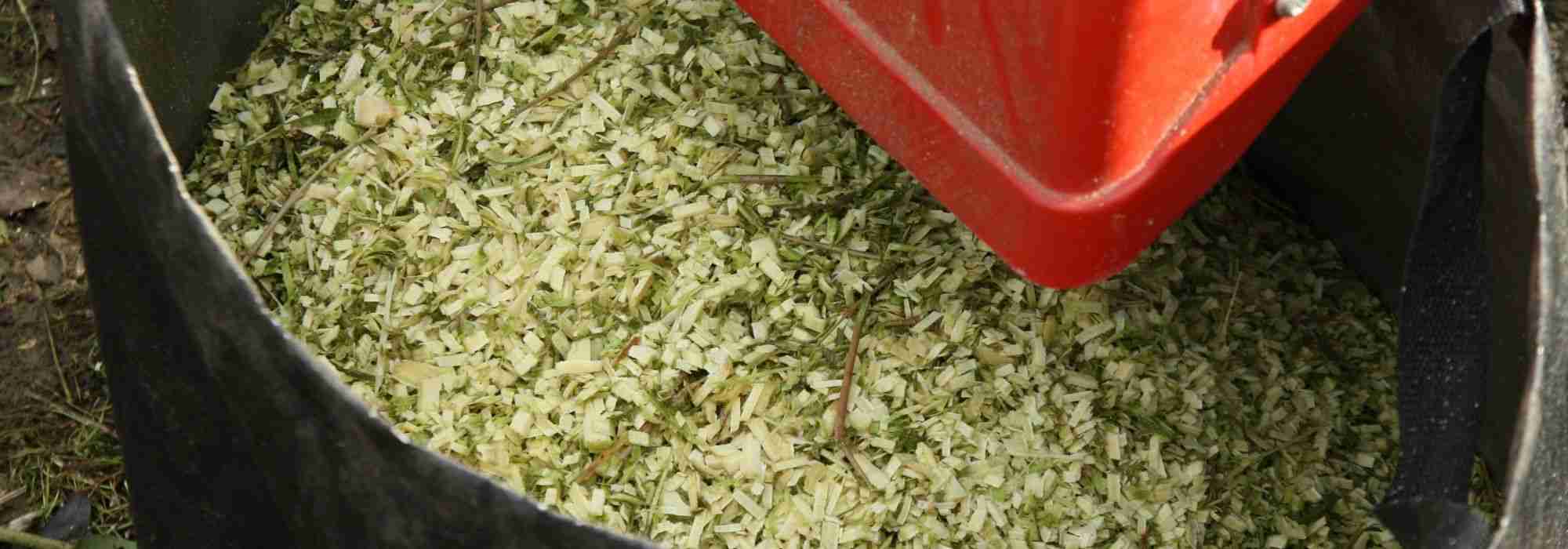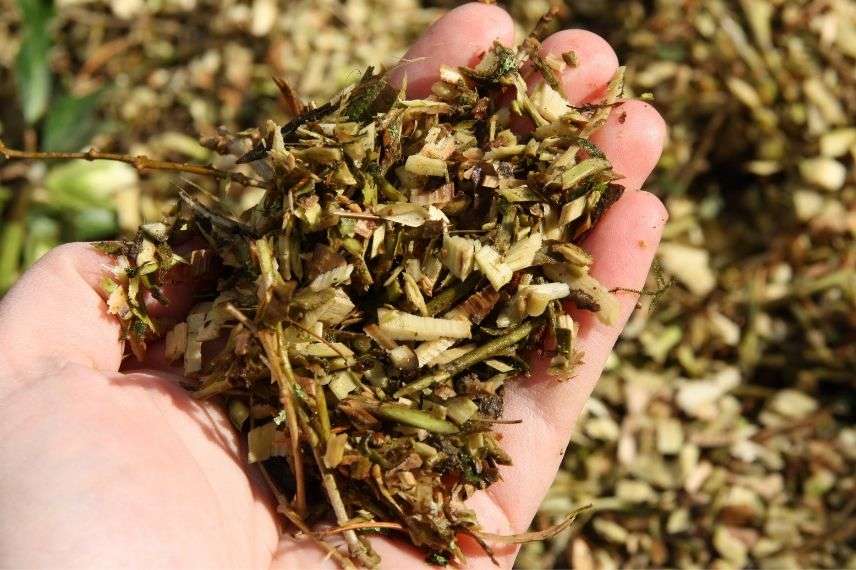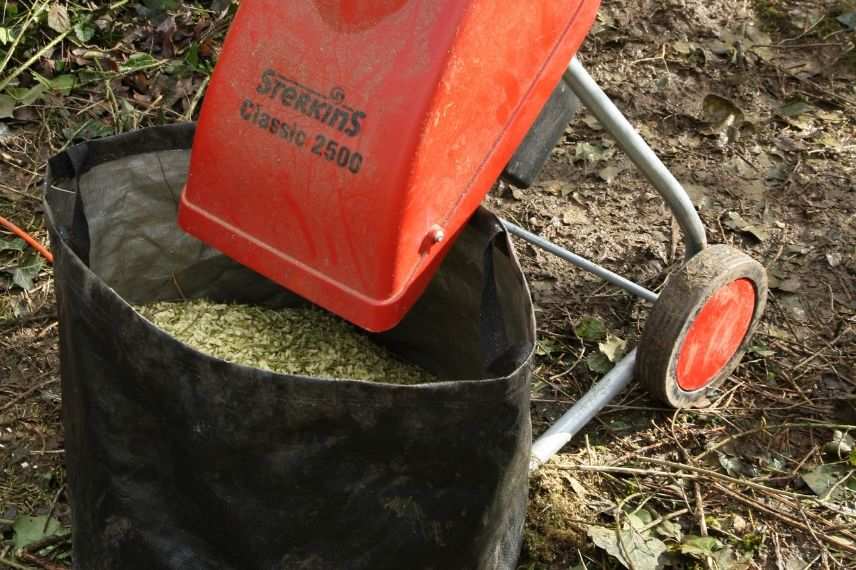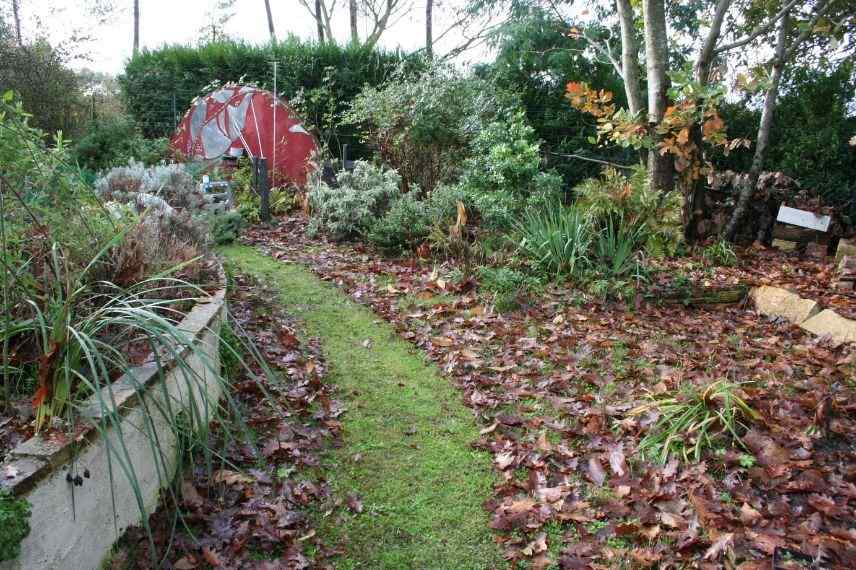
Garden shredders: uses, different models, choice
Our advice
Contents
Pruning, weeding, pruning, cleaning… Garden generates large quantities of ‘waste’. While many of these wastes are easily usable as they are or can be added to compost heap, others, such as branches of trees and bushes, can be bulky and sometimes difficult to manage.
Using a garden shredder allows you to turn this waste into a material of invaluable worth. You, as gardener, become part of a virtuous circle, where everything in garden returns to garden, to enrich, protect and nourish soil.
Next, choose a shredder suited to your needs! Mechanisms, uses, advantages and disadvantages, precautions to take… Everything you need to know about garden shredders!
Why shred plant material?
Chipping offers many advantages: it can considerably reduce volume of waste, down to 10 per cent of original volume! Result is simplified handling which also avoids trips to household waste recycling centre.
Burning waste is often forbidden in many councils, as it is dangerous, harmful to environment and a nuisance to downwind neighbours!
Shredded plant material, especially branches of trees and bushes, produces a highly valuable material. Le BRF or ramial chipped wood, can be incorporated into compost or used as mulch with many benefits:
- improvement of soil structure (humus) and neutralisation of pH
- protection against surface crusting (hardening of top layer due to rain),
- moisture retention and therefore water savings,
- reduction of adventive plants and consequently less weeding work,
- addition of natural nutrients which reduce need for synthetic fertilisers,
- sanitary action (reduction of diseases and parasitic organisms).

Read also
Mulching: Why? how?Which shredder should I choose?
Not all shredding systems are equal, whether for performance or cost.
If buying a shredder seems excessive for your garden, why not group together with family or neighbours? The budget can then be larger and allow purchase of a higher-quality tool. In any case, choose a shredder suited to the use you will make of it. I have used the same shredder for over 10 years and can assure you I have never regretted taking the plunge!
There are three main categories of shredders:
- electric shredders (mainly for amateur gardeners),
- petrol shredders (used mostly by professionals)
- manual shredders (for the more courageous).
Beyond the power source, the shredding system itself matters.
Disc blade shredders
A disc fitted with knives or sharp blades spins at very high speed (from 2,000 to 4,500 rpm). Generally recommended for gardens up to 300 m², these shredders can nonetheless be used on larger areas. They accept branches up to 3.5 cm in diameter, depending on the model and the hardness of the essential oils.
Advantages
- the resulting mulch is very fine; it composts more easily and more quickly
- very fast, it allows a high throughput in little time
- blades are usually reversible. When one side is worn, simply flip the blade for a new cycle. You then need to either sharpen those blades or buy new ones.
- this system accepts softer materials (such as perennial stems, for example), provided they are mixed with tougher waste.
- among the least expensive
Disadvantages
- impossible to reverse the disc rotation. In case of a jam, you must unplug the machine, lift the guard, free the disc, then replace the cover. A good balance between hard and soft waste usually prevents this problem
- the mulch is more chopped than truly shredded, but the material obtained remains of good quality
- it is often necessary to push branches into the feed chute. Not all shredders provide a specific tool and you then have to do it by hand.
- introduced branches can be shaken violently (risk of a whipping action) or ejected in the opposite direction. It is therefore essential to wear appropriate protective equipment and follow certain safety rules.
- louder than other systems
Rotor shredders
A toothed wheel crushes the vegetation against a compression blade at low speed (around 40 rpm). Recommended for gardens up to 500 m², these shredders accept branches up to 5 cm in diameter.
Advantages
- this is the quietest shredding system
- rotation reversal is possible, useful in case of blockage
- branches are better fed by the mechanism and there is no risk of a whipping action or ejection
- the vegetation is genuinely crushed and the mulch produced is coarser. Composting is slower and the result is well suited for use as mulch.
Disadvantages
- risk of jamming is greater when soft vegetation is used
- slower operation

Turbine shredders
This system is quite similar to rotor shredders. Recommended for gardens larger than 500 m², branches up to 5 cm in diameter can be recycled.
Advantages
- more powerful than the rotor, it is suitable for heavier jobs and harder wood (such as fruit trees)
- less prone to jamming
Disadvantages
- more expensive
Petrol shredders
Rotor or turbine, this is the type of shredder used by professionals. Running on essential oil, they offer power that allows shredding of large-diameter waste (up to 10 cm).
Advantages
- very powerful, their use is justified only for large-scale work
- can be used anywhere thanks to essential oil fuel
Disadvantages
- more expensive to buy than electric shredders
- heavier and less manoeuvrable
- for some, running on essential oil is less clean, less ecological or requires organisation to avoid running out.
- more maintenance (oil changes, lubrication, spark plugs, filters…)
Manual shredders
The straw-chopper is the ancestor of the shredder. Fitted with blades and counter-blades, the system is driven by a hand crank. More tiring, manual shredders only handle less robust and finer vegetation, even if some recent versions claim a capacity of 4 cm. Mainly used for shredding scrub-type vegetation, perennial stems or culms of grasses, there are mobile or fixed versions. They are often heavy and costly, and often not very manoeuvrable, but they do bring a certain romantic nostalgia to the garden, and their operation is more environmentally friendly.
Alternatives to shredders
Some small tasks can be carried out without a shredder, using these methods and tips.
Lawnmower
Grass culms, brambles, soft waste, leaves… All these elements can be spread on soil to be shredded by the lawnmower blade. Avoid, however, hardwood and thick wood of large diameter that would damage your equipment.

Leaves shredded by lawnmower!
Hand shears and pruning shears
Quite physical, manual shears and pruning shears can help out when wanting to cut into pieces plant material that is not very tough. Often used to cut back grass culms, cut progressively from top to bottom, or on stems of perennials after flowering. For shoulder and wrist health, reserve use for occasional, small-scale tasks.
Specific considerations
Beyond garden pruning and accepted diameters, some significant features should be taken into account when buying.
- waste collection method. Some models provide collection bins or bags, others do not (in which case place a tarpaulin or container beneath the unit)
- assembly, more or less easy and quick depending on model.
- weight, which can vary considerably depending on system used and power
- manoeuvrability, which depends on weight but also on presence or absence of wheels.
- space required, bearing in mind you need to store the shredder under cover when not in use.
- presence of a pusher, which can make feeding the feed chute easier.
- shape of the hopper (feed chute), choose a flared rather than a straight one.
- power : opt for models with a minimum power of 2200 W for satisfactory performance.
Precautions to take
All shredders, however powerful, require adherence to some basic safety rules:
- Wear appropriate protective equipment (gloves, safety goggles, face shield…).
- Ensure children and pets are kept at a safe distance from the machine while it is operating.
- Avoid using electric shredders in wet or rainy conditions.
- Switch off power and wait until unit has come to a complete stop before any handling. Unplug electric shredders if you need to dismantle them or remove guards (for example to clear a jam).
- Check cutting blades regularly. They must be properly sharpened to perform at their best.
- Keep petrol-powered shredders well maintained. Like lawnmowers, they require oil changes, filter replacements…
Which brand, which model? Useful resources to choose your garden shredder
Many brands such as Viking, Ryoby, Bosch and Einhell offer garden shredders for amateur gardeners.
- Subscribe!
- Contents
































Comments